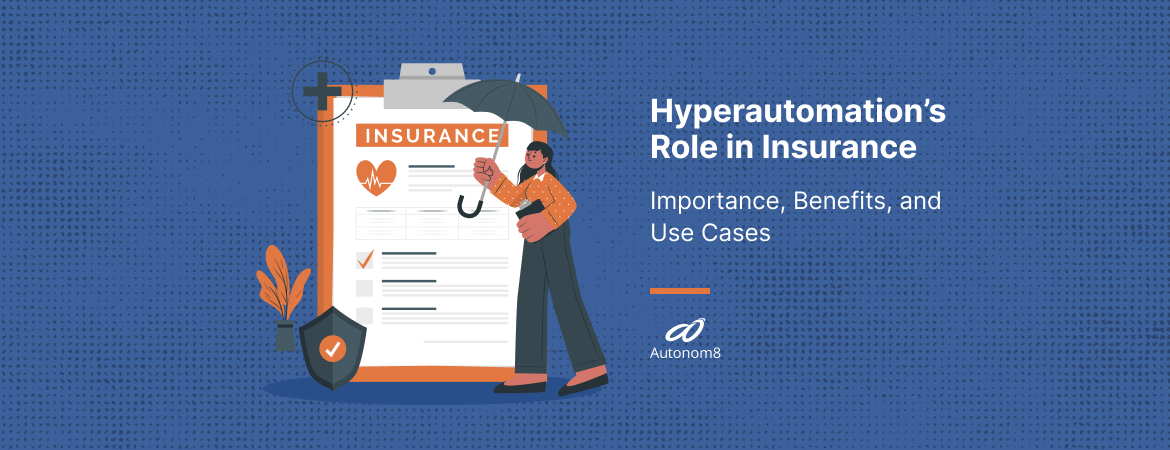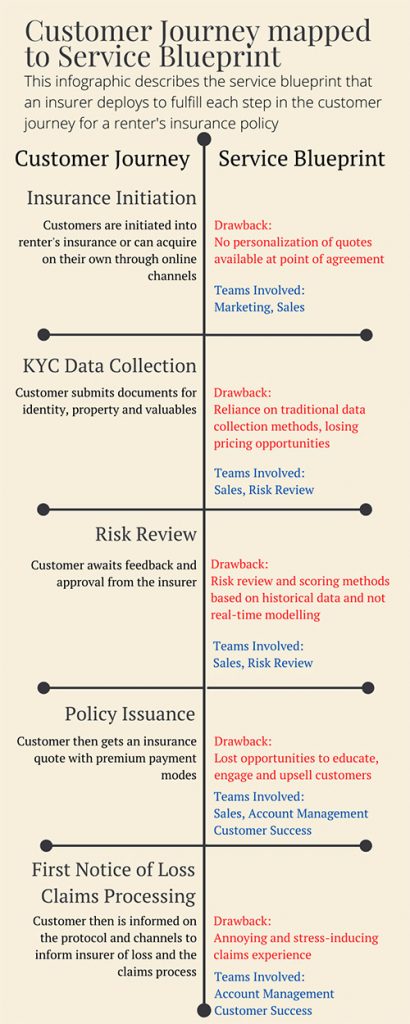Hyperautomation’s Role in Insurance: Importance, Benefits, and Use Cases


On average, an insurance employee may receive more than 55 new claim submissions daily. They must transfer each new claim form to a shared queue folder in the order they are received and subsequently enter the policyholder’s personal information, such as date of birth, address, social security number, and account number. These details are verified against the company’s claim processing system, following which they are forwarded to the payment processing department.
The insurance industry workforce is engaged in similar repetitive activities for a significant portion of their workday, which includes updating existing policies, reviewing documents for completeness, transmitting claims for payment, and other similar tasks. These activities are mundane, time-consuming, and have a high probability of errors, resulting in bottlenecks as the queue of pending claims only grows longer…
Performing these repetitive tasks is tedious for employees and can be frustrating for customers waiting for claims to be processed. With the increasing demand for faster and more efficient services, the insurance industry is pressured to find ways to automate these mundane tasks and streamline operations. This is where hyperautomation comes in.
Also read: How to Measure & Maximize ROI of Low-code
Automation has been an essential tool for the insurance industry for many years, helping to improve operational efficiency, increase productivity, and reduce costs. With the rise of hyperautomation, insurance companies can take automation to the next level and realize even more significant benefits!
One of the significant advantages of hyperautomation in the insurance industry is its ability to speed up the claims process. With the help of AI and ML algorithms, insurers can quickly review claims and determine their validity, making the entire process much faster and more efficient. Hyperautomation can also eliminate the need for human intervention in certain parts of the claims process, such as data entry, which can significantly reduce the risk of errors.
In the following paragraphs, we will explore the role of hyperautomation in the insurance industry, including its benefits, challenges, best practices for implementation, and future opportunities.
Hyperautomation has opened up new opportunities in every sphere of life and business. For the uninitiated, hyperautomation uses advanced technologies such as AI, ML, RPA, and NLP to automate complex business processes.
Hyperautomation differs from traditional automation in its ability to handle complex and cognitive tasks that were previously only possible for humans. By combining different technologies, hyperautomation can automate end-to-end processes, reduce manual interventions, and enable seamless communication between other systems.

Noted studies from PwC suggest that insurers can free up employees to focus on more complex tasks, improve customer experience, and increase efficiency by automating processes. This can lead to cost savings of up to 30%. This tech can effectively offer the following benefits –
Hyperautomation can streamline processes, reduce cycle times, and eliminate manual errors, increasing operational efficiency.
By automating processes such as claims processing and underwriting processes, insurance companies can improve the customer experience by reducing wait times, providing faster payouts, and offering more personalized services.
Hyperautomation can help insurance companies identify and mitigate risks more effectively by analyzing vast amounts of real-time data.
By reducing manual interventions, hyperautomation can help insurance companies save costs associated with labor and operational expenses.
Also read: How to Advance Your Digital Customer Journey Strategy with Low-Code Automation
Hyperautomation can help insurance companies automate the entire claims process, from intake to adjudication, by using AI and ML to assess the validity of claims and process payments.
Hyperautomation can help insurers assess risk and automate underwriting processes by analyzing data from various sources.
Hyperautomation can help insurers detect fraud by using AI and ML to analyze data and identify patterns that may indicate fraudulent activity.

Have you been losing market share consistently to new insurance and tech players? We’re here to help.
Schedule a demo with us today to upgrade your customer-facing digital insurance journeys with Autonom8’s enterprise-grade platform and its premium suite of products. With our A8Chat, A8Flow, and A8iQ, our customers are thriving. CJaaS can reimagine your insurance customer journey workflows, blend in data insights from different technology vendors, and enable autonomous learning capabilities into existing insurance journeys.
Related article: A Practical Guide to Implementing Hyperautomation Into Your Enterprise
In many areas within the insurance industry, hyperautomation can be applied, such as customer service, policy management, and risk assessment. As technology evolves, there will be even more excellent opportunities for further automation too!
Hyperautomation has the potential to transform the insurance industry, leading to greater efficiency, improved customer experience, and new business models.
Hyperautomation has the potential to bring significant benefits to the insurance industry, including increased efficiency, improved customer experience, and better risk management. As technology evolves further, hyperautomation will play an increasingly important role in the insurance industry, and insurers must embrace this new technology to stay competitive. Take advantage of the myriad benefits today and reach out to Autonom8 today.
Hyperautomation is a technology that combines artificial intelligence, machine learning, and robotic process automation to automate a wide range of processes, including administrative tasks, curriculum planning, and learning assessments. Hyperautomation technology can benefit the insurance sector in several ways, such as improving customer service, streamlining claims processing, reducing operational costs, and increasing efficiency. Hyperautomation can be used in the insurance sector for various purposes, including underwriting and risk assessment, policy administration, claims processing, fraud detection, customer service, and compliance. Hyperautomation technology can reduce costs in the insurance sector by automating repetitive tasks, improving efficiency, reducing errors, and enabling faster claims processing.What is Hyperautomation used for?
How can hyperautomation technology benefit the insurance sector?
What are some use cases of hyperautomation in insurance?
How can hyperautomation technology reduce costs in the insurance sector?
Fill in your details and our executive will get in touch within 48 hours
Fill in your details and our executive will get in touch within 48 hours